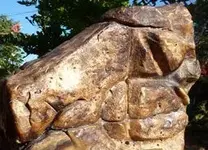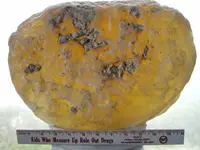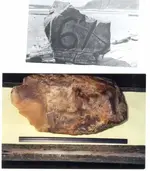Modrian,
I recently attended a presentation by Scott Williams, who appeared on the program, and others giving an update on their project to find and identify the Beeswax ship at Nehalem. The analysis they have done of the porcelain sherds is pretty convincing, and places them right around the end of the 17th century. That is why they think it is the San Francis Xavier (1707) or the Santo Christo de Burgos (1696). The interest thing is that between these two dates the great earthquake and tsunami of 1700 occured. This will probably be a significant factor in identifying which of the two wrecks carried the porcelain sherds. It is most unlkely that they both wrecked there. I have not seen the manifest for the Burgos, though I think that the team has it. It was the SFX that was carrying the 150 (?) tonnes of beeswax quoted on the TV show, but the team's latest thinking is that the wreck is the Burgos.
In earlier analyses, Alison Stenger and Herb Beal had identified some of the pottery samples as 16th century (Wan Li), suggesting an earlier date or a different source, but these appear to have been lost. Also some of the beeswax dates were late 16th century. The carbon date attributed to a ship's block that they found at Nehalem a couple of years ago placed it at the end of the 16th century or early in the 17th. There was also an English shilling from 15690 that was found on Nehalem spit after the Columbus Day storm of 1962. I think that it is quite likely that there is more than one wreck there, the Burgos or SFX and a ship from about a century earlier. There are a couple of early Manila Galleons that are still unaccounted for, a small Spanish ship that Drake left behind in 1579, and the Content, a ship belonging to Thomas Cavendish that went missing in 1587. Any of these could possibly have also wrecked at Nehalem, and referring to the thread about the San Agustin, could have been the ship that Vizcaino heard about wrecking on Santa Catalina. Its like a big old jigsaw puzzle, or perhaps two or three with the pieces all mixed together.
Just out of interest, at the time that Bee expert from OSU was examining the Nehalem Wax, he was also examining for me samples of another wax block that was found last year further south along the Oregon coast, at Gold Beach. It turned out to be some kind of paraffin wax, rather than beeswax, though I don't know how it got its amber color, or where it came from. Some of the shells clinging to it were apparently identified as not being native to Oregon. I am attaching a photograph of this block, just out of interest. I suspect it was used for sealing the stitching on sails or protecting ropes on a sailing ship, but so far we haven't thought it worth the cost of carbon dating to determine its age.
Mariner
Great fun.





